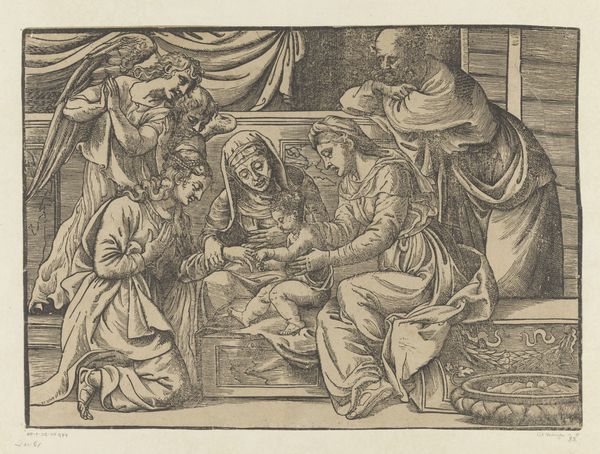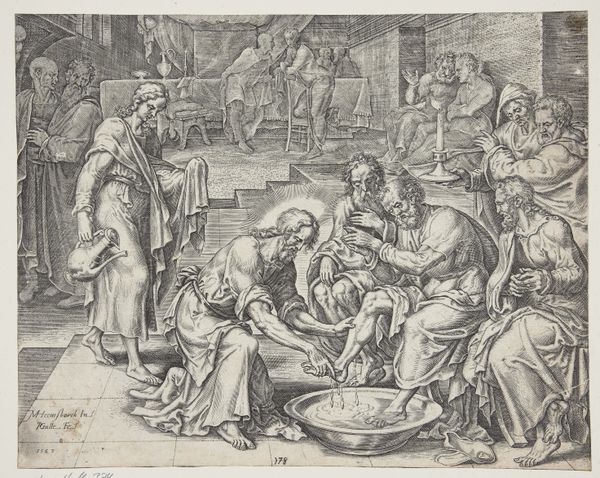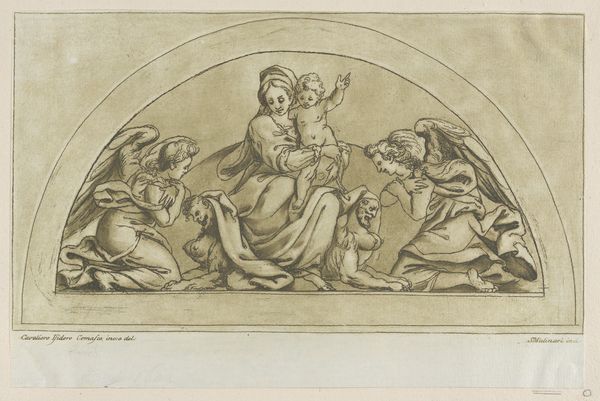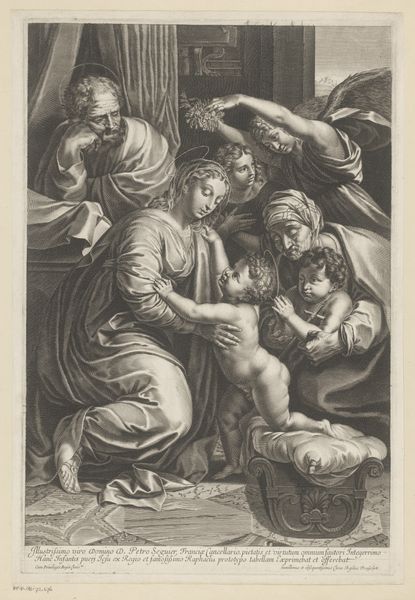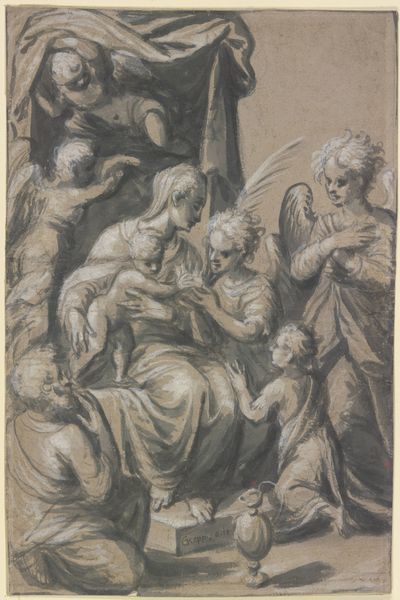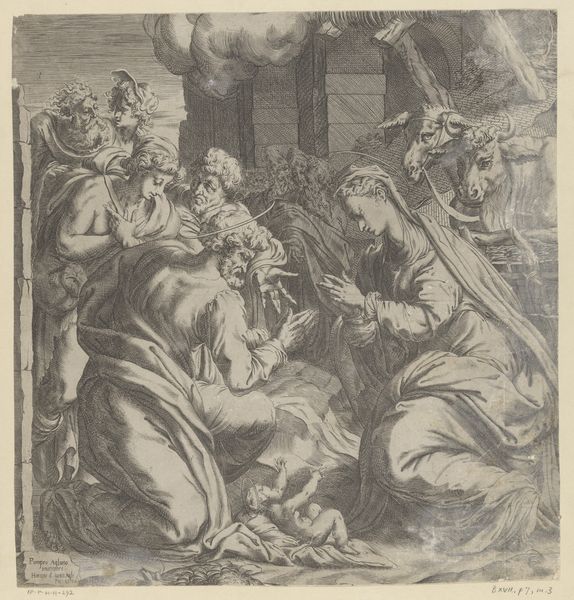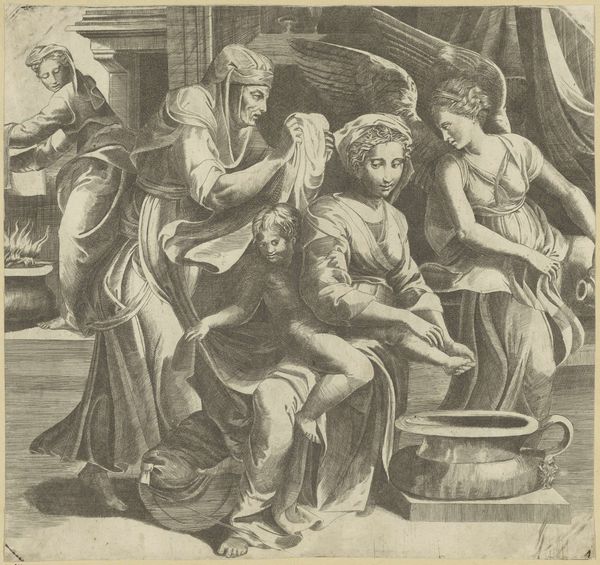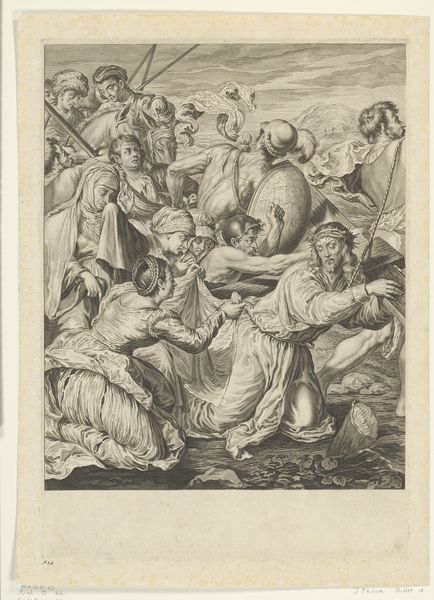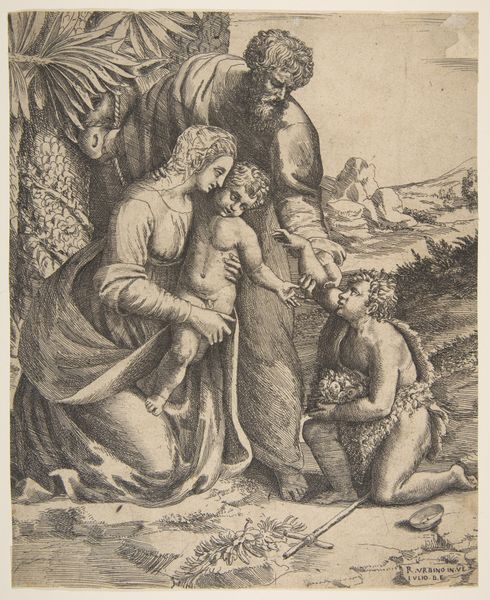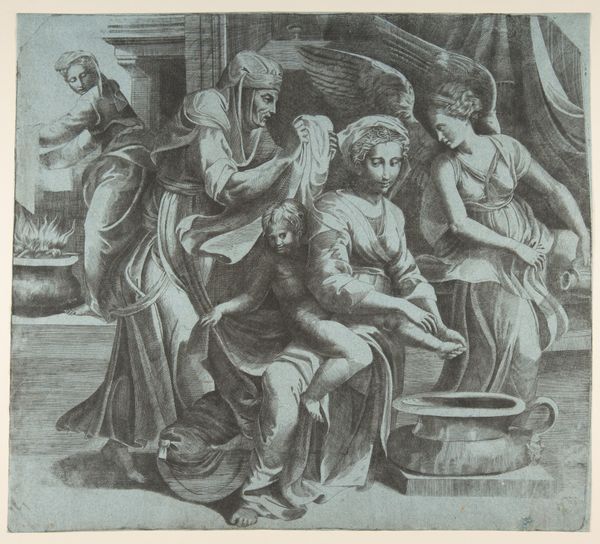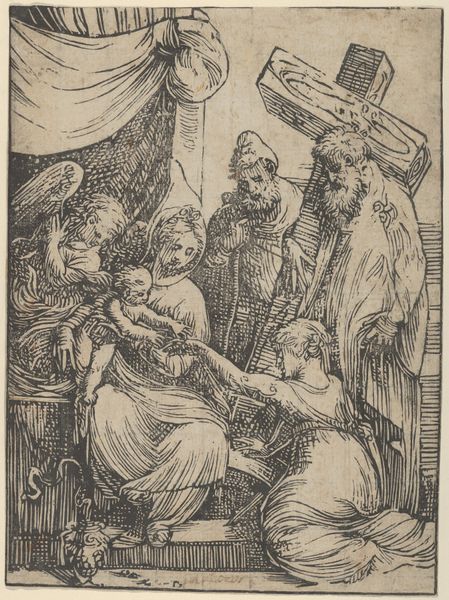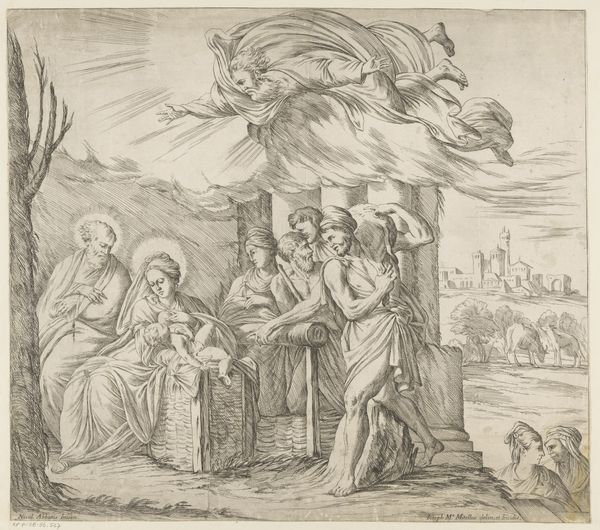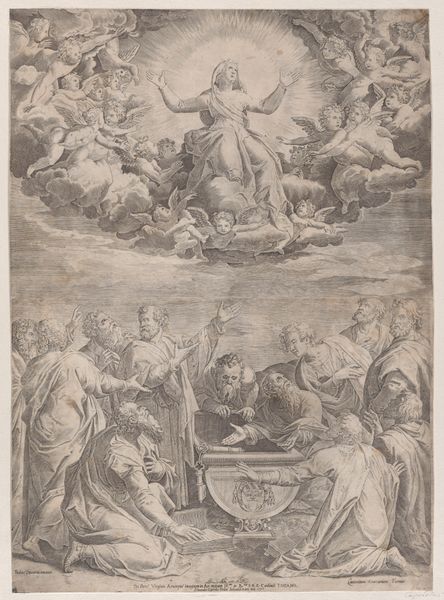
Saint Anne teaches the young Virgin how to read 1670 - 1731
0:00
0:00
drawing, print, engraving
#
drawing
#
baroque
# print
#
figuration
#
history-painting
#
engraving
Dimensions: Sheet (Trimmed): 9 9/16 × 10 1/2 in. (24.3 × 26.7 cm)
Copyright: Public Domain
Editor: This is "Saint Anne teaches the young Virgin how to read," an engraving by Domenico Maria Bonavera, dating from between 1670 and 1731. The composition is quite busy, almost crowded. What do you make of it from a formal perspective? Curator: Let's consider how the artist uses line. Notice the density of hatching, particularly in the drapery and the background figures. Bonavera masterfully uses line weight and density to create volume and shadow. It almost vibrates, wouldn't you say? Editor: Yes, especially around Saint Anne’s robes and the angel behind her. It creates a real sense of depth. But what about the positioning of the figures? Is there a reason they're arranged this way? Curator: Absolutely. Look at how Saint Anne and the Virgin are centrally placed and brightly lit, acting as focal points. The artist employs a pyramidal structure to ground the composition, with the figures acting as supporting pillars. This imbues the image with stability and harmony. What do you notice about the placement of the spinning wheel in relation to that structure? Editor: Good point! It grounds the image, mirroring the characters as a point of balance. The wheel and its parallel lines make it really jump out. Is it the visual representation of labour? Curator: Perhaps. More importantly, reflect on the symbolism embedded in those formal relationships. Notice how line, shadow, and even object placement—as well as figure groupings—serve less to tell a narrative and more to solidify core symbolic ideas. Editor: That’s a different way of seeing the Baroque. Instead of emotional storytelling, it’s all about… formal relationships reinforcing symbolism. I learned something new today. Thank you! Curator: It has been my pleasure to help. Remember that even historical context is filtered and mediated through a rigorous structure of forms, so that we might come to better understand the artist's perspective and purpose.
Comments
No comments
Be the first to comment and join the conversation on the ultimate creative platform.
